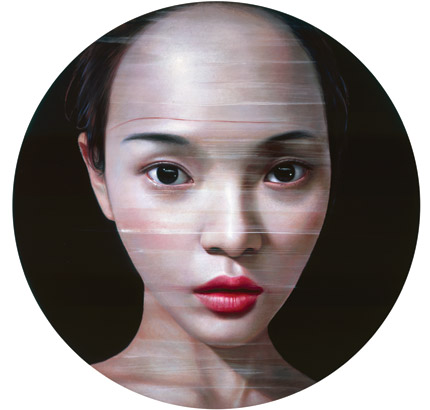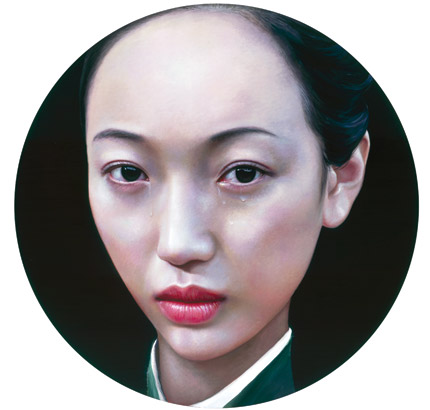LING JIAN’S CIRCULAR REASONING
| February 24, 2011 | Post In LEAP 7
I hire models for nearly all my paintings, but sometimes I also find subjects through friends or acquaintances. A few days ago I was at a Prada party, and I saw a very pretty woman, so I took her photo. I collect these materials, but I don’t use everything. Some remain just as ideas.

When she cried it was like her eyes had finally come alive. Crying is when the heart and the eyes are linked most closely, the most honest experience. Everyone has had this experience. No one can really change their face, it comes from above. So all I can do is try to extract things from it. That’s why my paintings are so much about eyes.
In painting, there is always a layer of meaning behind that of so-called beauty, and everyone accesses that differently. I use the simplest and most direct method for creating this space. When people look at my paintings, they will find something beyond the surface. I think this is a very contemporary position. Using newer techniques or media doesn’t allow for the same kind of possibility. It’s not a question of realism, but rather about what sort of rationale lies behind the realism.
For twenty-first century painters, pursuing the revolution is less important than enjoying the moment. It is different from the modern or postmodern ways of working; I use the smallest possible space to express my own pleasure. And of course this pleasure, when expressed, leads us to a variety of other social questions. I think a lot of that pleasure comes from encounters we have in society, and how that transfers into painted expression. I come at it from a different perspective. When I paint a face, I enjoy the excitement its shape gives. I take photos of the model, and then I sit quietly and slowly think about her facial expressions and speculate on her inner feelings.

I don’t paint the models as they sit there, because that would be a burden. A model is a living being, and I have to interact with her. Picasso worked differently, for him the presence of the model would bring stimulation of all kinds, and he would use that to create. It brought him possibilities. Early expressionism was the same way. But today I don’t think these short-term stimuli would be of any help to me, because they would control me. For me the best process is to take her picture, figure out how her form actually works, and then input all sorts of other things that I believe are valuable. This is a more active way of working.
I have worked on round canvases for many years, and I began to do so when I was painting Buddha statues. It was a way of invoking Buddhist beliefs about circularity, a nod to that philosophical foundation. It destabilizes the painting, removes it from reality, just like the brushstroke traces I leave on the surface. I am looking to create a sense of distance, of space, something in between. I think that this is the only accurate reflection of “reality.” That’s how life is today.

